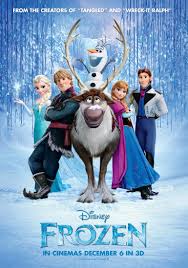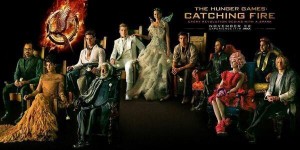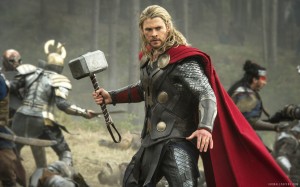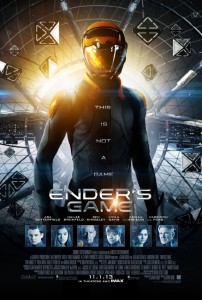The Hobbit: The Desolation Of Smaug
Posted on December 12, 2013 at 6:00 pm
B+| Lowest Recommended Age: | Middle School |
| MPAA Rating: | Rated PG-13 For extended sequences of intense fantasy action violence, and frightening images |
| Profanity: | None |
| Alcohol/ Drugs: | None |
| Violence/ Scariness: | Extensive and intense fantasy-style violence with characters in peril, monsters, weapons, and fights, characters injured and killed |
| Diversity Issues: | Diverse characters, some |
| Date Released to Theaters: | December 13, 2013 |
| Date Released to DVD: | April 7, 2014 |
| Amazon.com ASIN: | B00BEJL75I |
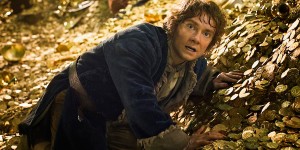 Everybody ups his game in this second of the three-part Peter Jackson version of J.R.R. Tolkein’s The Hobbit; or, There and Back Again
Everybody ups his game in this second of the three-part Peter Jackson version of J.R.R. Tolkein’s The Hobbit; or, There and Back Again. The first one courageously tried out the new hyper-clear technology with twice as many frames per second that felt disorienting, chilly, and a little thin. More seriously, it got bogged down in the storytelling. A book about a journey became a movie that spends 40 minutes at home before anyone goes anywhere (with two different songs). This second chapter starts right in the middle of the action and never stops.
Here’s a summary of the first film to get you up to date in case you skipped it or don’t remember: Bilbo Baggins (Martin Freeman), the title character, is accompanying a brave group of dwarves on a quest that will take them to the mountain lair of an angry dragon named Smaug who sleeps on an endless pile of stolen gold and jewels. In part one, they made it part of the way there. Part two begins in the midst of the action. They are still far from their destination but every step is treacherous and every stage in the journey brings more trouble. Middle Earth is deeply troubled by its divisions. Dwarves and Elves do not trust one another.
Martin Freeman returns as Bilbo, whose epic travels inspire an inner journey toward meaning and purpose. We see his struggle when he cannot bring himself to tell Gandalf (Ian McKellen) the truth about what he found. He wants to tell the wizard about the magical golden ring he discovered. But when the moment comes, and he can only say that what he found in the cave is his courage. That is an intriguing statement, partly true, partly self-evidently false as he does not have the courage to tell Gandalf about the ring. But as we know from the Ring trilogy, part of the power of that plain gold band is the way it works on those who — at least temporarily — possess it. Perhaps it is the ring that tells Bilbo to keep the secret.
But Bilbo, reluctant to join the dwarves in part one, is fully committed now, so in that sense he has found his courage, and finding it, now sees himself differently. And it is that inner journey that holds the story together amidst the arrows and giant spiders and swashbuckling and guy with bird poop on his head and portentous statements like, “The fortunes of the world will rise and fall but here in this kingdom we will endure” (when we know they will) and “This forest feels as though a dread lies upon it” (when we know it does), and “It’s not our fight” (when we know it is).
Purists may object to the insertion of a brand-new character, but Evangeline Lilly as Tauriel, a warrior elf, is such a welcome addition that even Tolkein should be glad to add her to the cast. And then, finally, there is Smaug, a scary monster who can see where humans, hobbits, dwarves, and elves cannot. Benedict Cumberbatch, in his fifth major film appearance this year, provides the voice of ultimate predatory evil, and a cliffhanger that leaves us eager for the final chapter.
The intricacy of the detail everywhere you look is more than gorgeous. It lends a timelessness to the story. It tells us that there is a history here, that the people who created these structures intended them to be permanent and beautiful. The fight scenes, staged as well or better than any other this year, are more than graceful violence. They, too, communicate a seriousness of purpose and meaning that these characters bring to their lives — and inspire in ours.
Parents should know that like the other “Lord of the Rings” films, this one includes intense and sometimes graphic fantasy violence with monsters (dragon, giant spiders), weapons, fights, and constant peril, and characters are injured and killed.
Family discussion: What title would you pick for yourself? Why does Bilbo agree to get the Arkenstone? Why doesn’t he tell the truth about the ring?
If you like this, try: the book by J.R.R. Tolkien and the “Lord of the Rings” Trilogy

